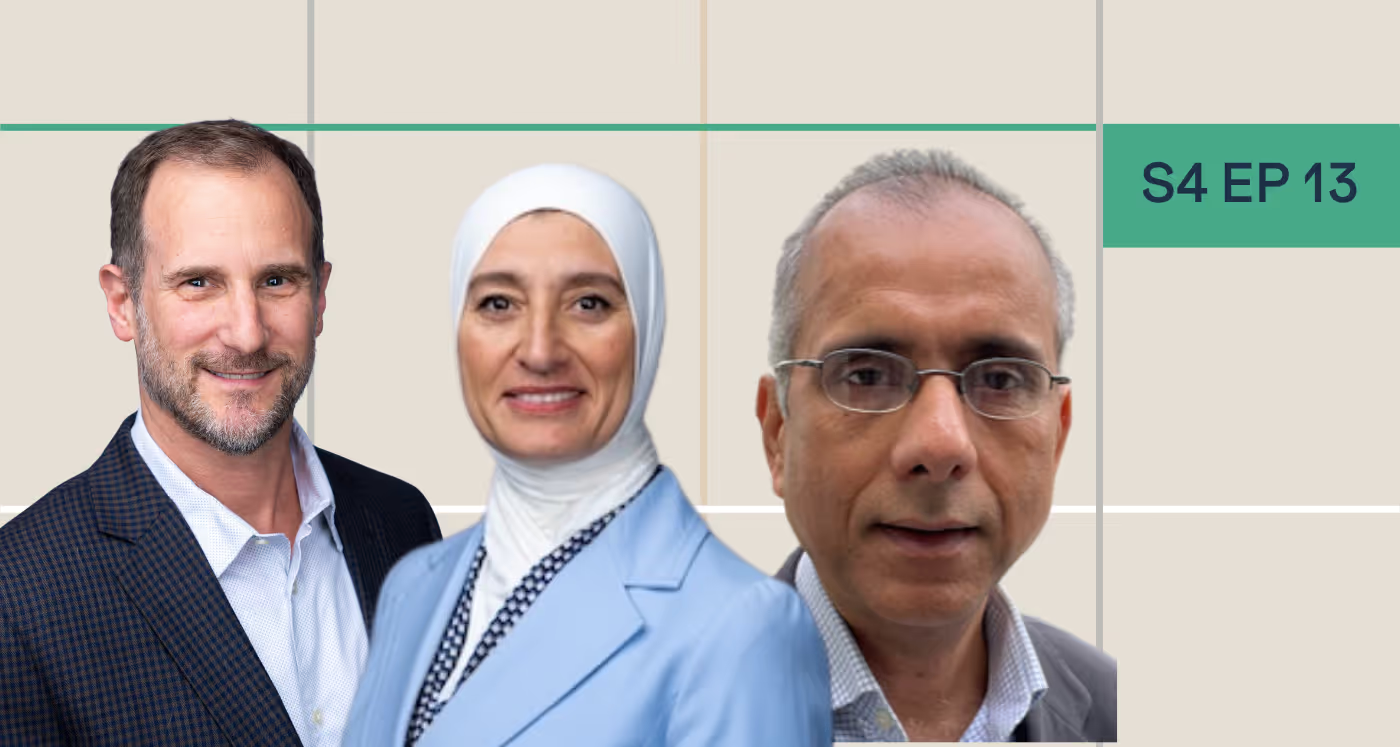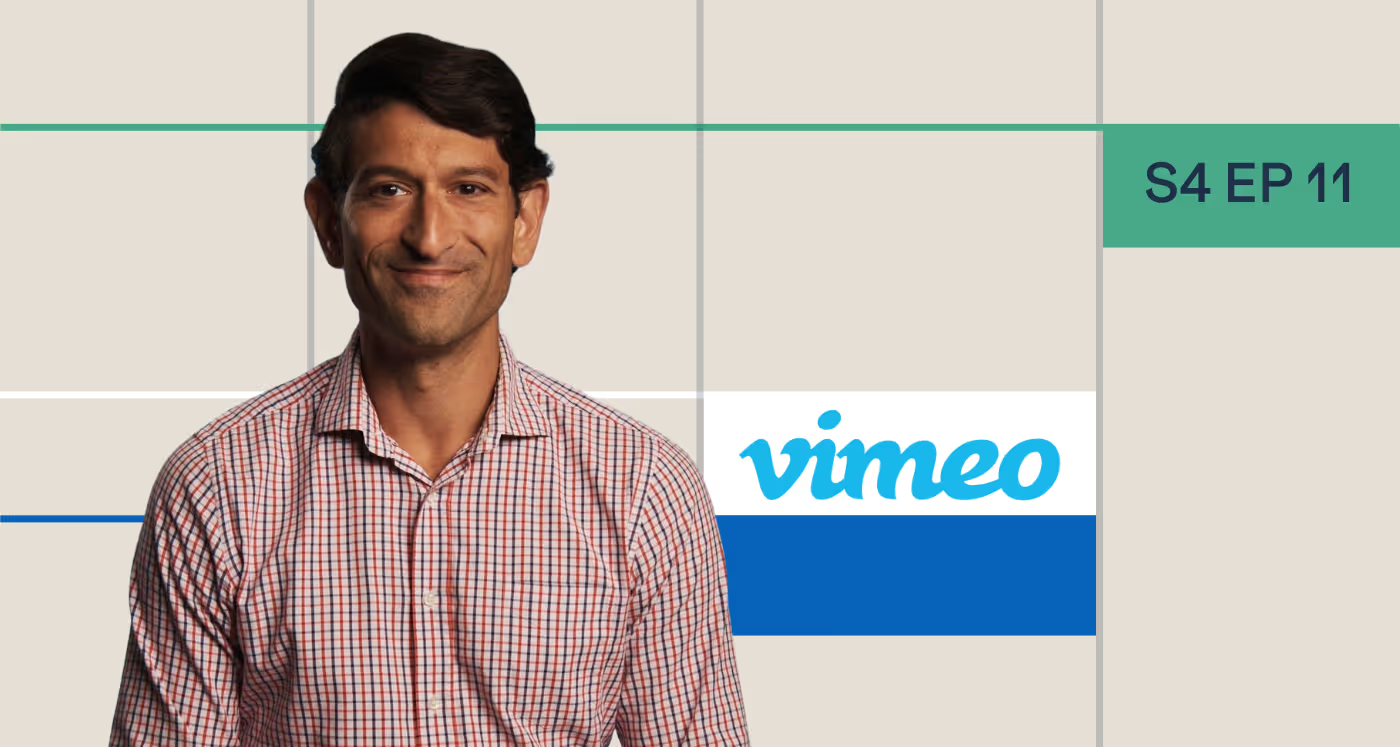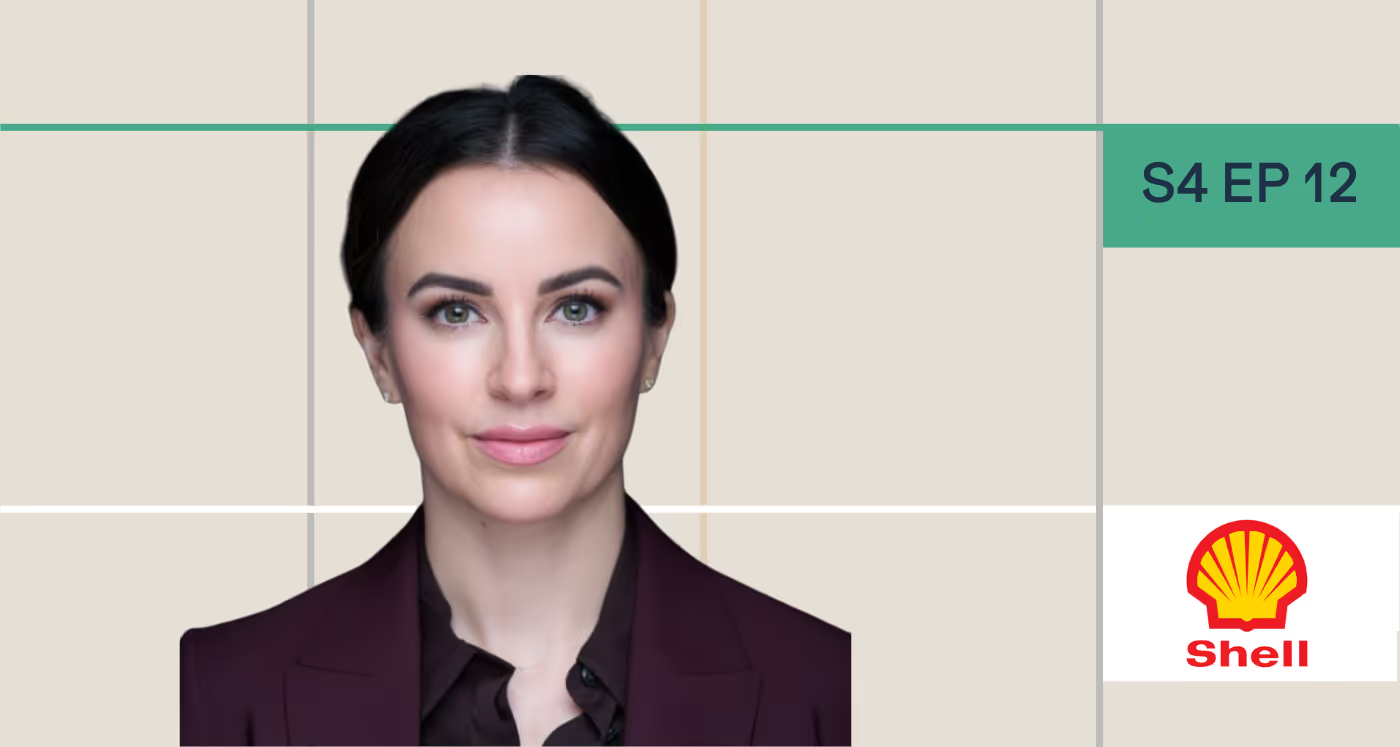All right. So, Ken we're going to be talking today about the power of video, creative content, and storytelling and IR, and I can't think of a better guest than the head of IR at Vimeo.
Evolution of IR Communications
Mark Fasken: But I wanted to start off with our first question just around how your approach to IR communications has evolved throughout your career. And in particular, how you're using digital content today in your investor relations program.
Ken Goff: Yeah, I'm really excited to be on the podcast to talk about video in IR. And You know, podcasting is a great medium for people like me with a face for radio, but Mark, I feel like you were made for video. So I'm really excited to have this conversation with you.
To your question, my approach to IR communications and using digital content has definitely evolved throughout my career. I started at eBay in investor relations, back when eBay had a higher market cap than Amazon, just for context on how long ago that was. And eBay had an award winning IR team, some of the best people in the industry that I was really lucky to learn from early on.
And they taught me back in the day that there really isn't a ton of benefit to trying new things in investor relations. Trying new things, experimenting with new technology, I was told, typically adds a lot of risk with a whole lot less tangible benefit, and that the idea really should be to cluster around what everybody else is doing.
There's no real first-mover advantage. The exception to that throughout my career has been if you have the opportunity to highlight and showcase your own company's features and functionality with some communication, that's probably worth doing. So, for example, when I was at Facebook, we launched the Facebook IR page on the Facebook platform.
So, you know, that brings us to my time at Vimeo now.
Using Video in Investor Relations
Ken Goff: And certainly, as a video SaaS platform, I want to be using video to showcase Vimeo's features and functionalities to investors. But even beyond that, the internet is moving towards video. At this point already. 82 percent of internet traffic is video.
And when you think about the fact that there are about 2 million college graduates in the US alone every year, they all engage with video as their primary means of communication. So I think it's pretty clear that video is coming. And you know, everyone I have the conversation with thinks five years from now, 10 years from now, there will be a lot more video used in investor relations than there is today.
So the question now is, what's the best way to use it? How do you get ahead of this wave and make sure that you are on trend when something that we see coming down the pike pretty clearly gets here.
Real-World Examples of Video in IR
Mark Fasken: Well, that's a perfect segue into our second question, which is getting into some of the ways that you use video and and any other forms of creative content that you found to be useful to enhance your IR program. So like maybe just like, you know a few real world examples of how you use video today.
Ken Goff: Yeah, absolutely.
So, we do a lot of video at Vimeo, given who we are. When I got to the company, we were doing video earnings calls. And the way that we were doing them up front, it was a replacement for a typical earnings call that would happen audio only. So we're talking about 15 minutes of the CEO, 15 minutes of the CFO, and then a live video Q&A.
What we realized is we looked at our analytics, and no one was really watching the full video. Nobody was watching a 30-minute earnings video. We kind of saw that they were watching maybe around two minutes of it. So we've updated how we're looking at our earnings videos so that they're rather than being in a replacement or substitute for an earnings call, we put out a shareholder letter, and we use the earnings video to augment the communications around the quarter.
We found that that that has gotten more engagement. You know, if we put out a three-minute video, it tends to get about two minutes of watch time. So, a whole lot better to do that than a 30-minute video. And, we are continuing to tweak and iterate to try to make it as valuable as we can. Beyond the earnings videos,
Enhancing Investor Engagement with Video
Ken Goff: you really can view video as an opportunity to add a human face to your communications. I've been playing around with a bunch of different things. For example, pretty standard practice after a conference that an IR person goes to email thank yous to the people that you met with during the conference, possibly follow-up on some open item that was discussed during your meeting.
I've been playing around with sending thank you videos really quick, " Hey, great to meet you at the conference, please let us know if you'd like to do a follow-up. And maybe you had asked about this, and I said I'd get back to you. And here's a quick explanation of the thing that we had been discussing."
Then, there's also things like when someone signs up for our email alerts on the IR website. Or someone fills out the contact us form. Kind of look at every interaction as a chance to build a relationship. And putting up a single line. “Thank you, your email has been received”, versus putting up a video embedding it in the thank you page saying, "Hey, really appreciate you reaching out to investor relations.
We'll get back to you as soon as we can. In the meantime, you can look at X, Y, Z to learn more." So yeah, I think that there are a lot of these smaller interactions that can work. Another thing that we've done is we have added video showcases to our IR site. This is a Vimeo product that we're using.
But I've actually gotten some really great feedback. It's essentially just putting a carousel or a playlist of product videos or customer success videos. We do the earnings videos that we do every quarter as well. So, you know, not dissimilar to how you would want to organize text information or slideshows on your website.
Having a video resource library is an interesting way of engaging with investors.
Internal Communications and Future Plans
Ken Goff: And then, I also use it a lot for internal comms. I like to do, you know, try to do it weekly or every other week, a quick video with some charts. What's going on in the markets? What am I seeing? During earnings, like kind of breezing through some of our peer earnings and what they were reporting.
And then also things like, if I have a question about a spreadsheet. Rather than setting up a 15-minute video call on someone's calendar to go through it, I can just screen-record the spreadsheet, highlight the cells, and say, "Hey, what's going on with this number?" So there are a number of things, internal and external, that we're doing.
There are other things that we plan to do. Next year I would like to have an ESG video. You know, I think that putting a human face to ESG is a, is a pretty good use case for video. And then also, rather than just putting up an investor deck on a site actually having a video voiceover. So, your CEO or CFO can speak to the slide presentation that you put up on the site. So a bunch of stuff we're already doing, a bunch of other opportunities that we're looking into, and Yeah, I think that we're getting some pretty good feedback on it.
Mark Fasken: That's awesome. Ken Those are a ton of great examples there. I want to recap because there's a ton of good stuff in there. So, one is the video earnings and re recording those, adding them to the playlist on the website. You talked about, as part of that playlist, having other videos, product videos, customer stories.
You're using video for the investor thank you, which I think is awesome. And it, I was thinking about this the other day, it's interesting, like 10 years ago, when I first started in software and software sales, being on a Zoom call or I don't know, we use Webex or something back then the idea of turning your camera on was not a common thing.
A lot of the time, you'd be on a call, and everybody has their cameras off. And I remember that transition in COVID of, everybody's going to turn their cameras on because otherwise, it's just weird. Like we need some face to face interaction. And now it's weird if you don't have your camera on.
And I always feel like this is the same thing. I'm sure a lot of people listening to this are going, that's kind of a bit awkward for me, like recording myself on a camera, sending a note to an investor. But I feel like it's one of those things you just have to do it a couple of times and it becomes natural.
Ken Goff: Yeah, I couldn't agree more. I mean, I think that If we all remember back to how we viewed video communications five years ago, things have changed. So, yeah, I totally agree that, again, video is coming in a lot of ways in the consumer world, it's already here. But it really does feel like it's, it's coming to enterprise.
Mark Fasken: Absolutely. I also, I like the idea of the internal comms. You're talking about doing an ESG video at some point, the investor presentation. I mean, every IR page has an investor presentation on there, and it's just click through the slides. Which, you know, how much value do people really get from that versus, to your point, having a video with the CEO or whatever in the corner, speaking to it, seeing their face, hearing their energy.
I think that's that's a big one. The other one that I was thinking about, and I've heard this from another couple other IROs and wondering if you do this. Is one, a video or recording surrounding the model. So an analyst training session that can be hosted on the IR website for future reference.
Because I'm sure a lot of IRs get questions on that. It's easy to say, "Hey, all these questions are answered in this video. Is that something that you've toyed with?"
Ken Goff: It's a great idea. It's not something that we have done at this point, but certainly something that I think is worth exploring. Interestingly, in a lot of ways, that type of content can also be leveraged internally for orientation to help people throughout the company better understand how you make money and what your costs are.
I do find that that typically helps alignment internally and getting teams on the same page if everyone knows how the business model functions. So, totally agree that that's a great use case, both internally and externally.
Mark Fasken: Yeah, and then the last one that I was thinking about, it sounds like you're doing this a little bit internally is Q&A, right?
I mean, a lot of IR websites, you'll see, I don't have an FAQ on their site. We all know there's questions that you just get over and over and over again. So, like, to what extent can you just record a video and say, I'm going to send that over, and it's, you know, to type the same email 50 times, and again, you can always explain things a little bit better.
I find when you're speaking rather than type it out in an email.
Ken Goff: Yeah. So
Mark Fasken: lots of good uses for video and Vimeo, from that question.
Consistency in Messaging
Mark Fasken: So I want to move to our next one, which is around consistency, right? Because you start creating all this content, you start creating videos. I think really in any investor relations team, the consistency of the message is so important.
And so, how do you ensure consistency across the content, the videos, your in person meetings, and across your executive team?
Ken Goff: Yeah. So. It's a great question. I feel as though it's not dissimilar from any other medium of communication. Video is just more robust communication than just audio or just texts.
So, you know, when you think about it in a way, video de facto adds an element of consistency by putting a face to the voice. So, if you're communicating through video regularly, and then you go to a conference, the investors feel like they already know your exec team. They've seen them present.
They've watched them talk about earnings. They have seen you send thank you emails that are videos. So, it really, in my mind, augments other comms, and gives you the opportunity to provide additional content, and really just gives investors more opportunity to learn about and engage with the company.
So I wouldn't view it as this different medium. It's just a newer, more underutilized medium in the investor relations space at this point. So wouldn't think about it too much differently than any phone call.
Mark Fasken: Yeah, agreed. Makes sense.
Adopting New Technologies in IR
Mark Fasken: You talked a little bit about this at the beginning of our conversation.
You know, adapting or adopting, I should say, new technologies and formats. But, I mean, you've gone ahead and done that, right? I mean, you, you got this recommendation of, like, trying new things isn't really worth it. You know, I think that, like, makes me die inside a little bit to hear that. But, but, you know, you've gone out there and tried new things, and you're trying to think outside the box. And so, what advice would you have to IROs who are thinking about whether it's just new technology or incorporating new forms of content, you know, new tools that are out there, like what, what advice do you have from your experience of trying things?
Ken Goff: Yeah. Great question. I think that the most important thing is to start small. You don't have to take the view that your first foray into this has to be massive and perfect. Obviously, everything has to be accurate in investor relations. But if a video is a little bit rough around the edges on your first attempt, I still think that you're going to have more benefit from trying it than detriment from, you know, whatever it might be that was difficult about the creation or editing process.
But yeah, you really don't need to boil the ocean. I think you really just want to be experimenting. Again, everyone I talk to believes that this is coming. Video is going to be a bigger part of investor communications going forward from here. And while it might not be here fully at this moment, familiarity with the medium is going to become a competitive advantage as video becomes more ubiquitous in investor comms.
So, you know, you got to meet your constituents where they are. And it feels like, at this point, video is, in a way, an opportunity to stand out. But down the road, you might find that willingness to use video is what means you're still standing.
Mark Fasken: Yeah, I hear you. And I think that that idea of you said it there, deciding what are the steps, or I always use the term just like baby steps or dipping in your toe, right? Like, if this doesn't mean that you need to jump in and say, I'm going to do everything's going to be video now, like, all my emails are going to be video instead.
It's like, what are these little areas where you can add value and ramp up over time? I think that makes sense. And the same thing goes for when we think about new technologies. I mean, I've seen. AI and investor relations is this huge conversation, and everybody's like, I don't know what to do. And I haven't really spoken to many IROs yet who are using AI for everything or have this massive part of their job that they've then automated.
It's like these small little tasks that are administrative and they can just Remove that administrative burden. And so I think it's like that with everything. You know, we even think about that with Irwin, people are like, it's a big platform. What am I going to do? Like, where am I going to start?
And we're like, just this, this area, like if targeting is your thing, let's like, let's just start there and we can, we can expand over time. You don't want to get people to get too overwhelmed.
Ken Goff: What is the journey of a thousand miles starts with the first step. And the other thing, you know, to your point of not needing to feel as though everything immediately has to switch
if you decide to dip your toe in the water, starting with internal can be helpful in the IR world because external comms are pretty high stakes in investor relations. But just shooting off little questions about a spreadsheet or tidbits of information to your coworkers and getting feedback there, getting to experiment with using video, that can be a good place to start.
Mark Fasken: Great.
Budget-Friendly Video Solutions
Mark Fasken: And so, just kind of getting to our last question, and it's often one of the more important questions in the investor relations role is around, you know, budget for many IROs, limited time, limited budget. So what are your thoughts around, you know, how an IRO who has limited time, limited budget can incorporate some of these more innovative forms of content into their communications?
Ken Goff: Yeah, so video's not actually that expensive. Yeah, obviously, this is not meant to be a podcast shilling for Vimeo subscriptions, but the entry-level Vimeo subscription after your free plan is a couple hundred bucks a year. And so it's certainly not that one has to break the bank to experiment with video.
Also, if we just look ahead AI is going to change everything. You know, what, what a revolutionary statement at this point. With video, AI is going to really be a massive unlock that is going to make creating and editing videos easier. We're probably not that far off from having video avatars in place of a human look as though a human is delivering a message.
The opportunity to translate into different languages, and reach a broader investor audience that way. But even beyond the creation and editing, AI is going to open up indexing and cataloging of videos. So it's going to make the information that is currently, or historically trapped in a video, where the only way to get the information is to watch the whole thing, it's going to make that searchable.
It's going to make it so that you can ask a video, "Hey, what did the CEO say about SMBs in the quarter and the impact on pipeline?" And AI is going to make it so you can jump immediately to that point in the video to get your answer. It's going to allow for summaries and for highlight reels to be made really quickly.
And, you know, I think about transcripts and how I have used them in investor relations. There are some times that you're going to a transcript and reading the whole thing deeply for content. There are some times that you open up a transcript, and you're skimming to see if anything jumps out.
And there are some times when you're opening a transcript to search for a very specific thing that was said. At this point with video, the only thing that works is the full read equivalent of watching the full video. But AI is unlocking the idea of skimming and the idea of searching videos. And again, from a budget perspective, it's not as expensive as you likely think it's going to be. I think that given where we are in the trajectory of video and investor relations, it is very worth experimenting. It's very worth starting small. You can do it without breaking the bank by a long shot. And I do really believe that the juice is going to be worth the squeeze if people are willing to give it a go right now.
Mark Fasken: Absolutely. I mean, you made a point earlier saying, you know, it doesn't need to be perfect, right? I think probably I would imagine that there's a lot of IROs that think, you know if my CEO is going to record a video presenting our investor deck, like I need to hire a production company to come in and do all that stuff.
And I think your reality is probably not, right. Like you could probably get on zoom or teams or Vimeo or something and do a recording with the slide show up, have a green screen background that you could buy off Amazon for $20, and you're good. Right. Like it, it doesn't take that much.
Ken Goff: Yeah. I really.
I really agree with that. It is you know, investor relations, we are held to a standard of perfection. And that permeates pretty much everything we do when you talk to most IR folks. But with video, it's important to not let perfect be the enemy of the good. And you might find that there is certainly a value-add to having a slightly imperfect video versus not having a video at all. And I think that the Delta there is only going to grow as video becomes more ubiquitous, adoption is higher within the enterprise, and people come to expect it.
Mark Fasken: Absolutely.
Conclusion and Final Thoughts
Mark Fasken: Well, Ken, really appreciate you coming and doing this.
There's a lot of good learning in here. So thank you for your time.
Ken Goff: Yeah, it's my pleasure. Thank you for having me.




.avif)